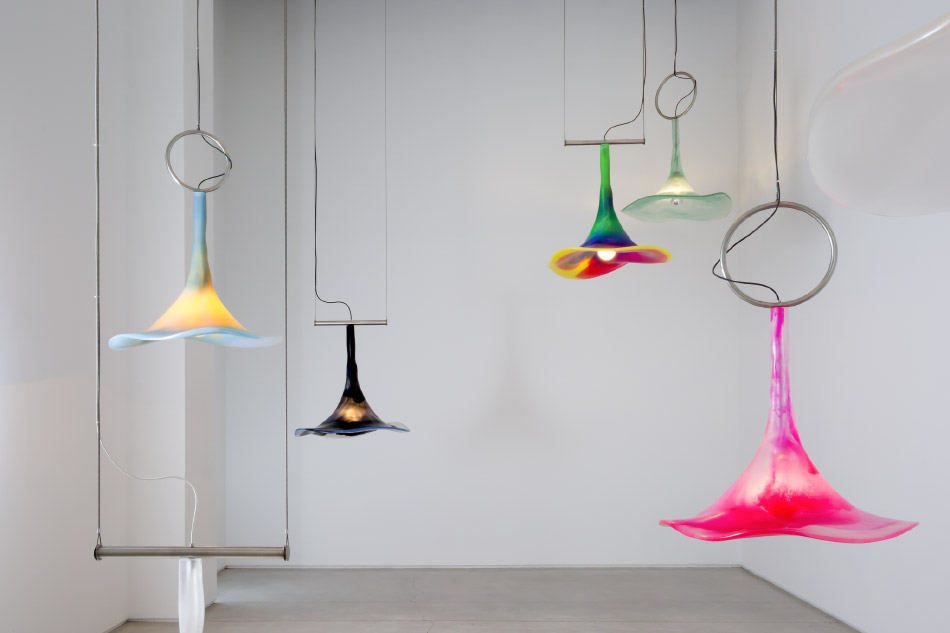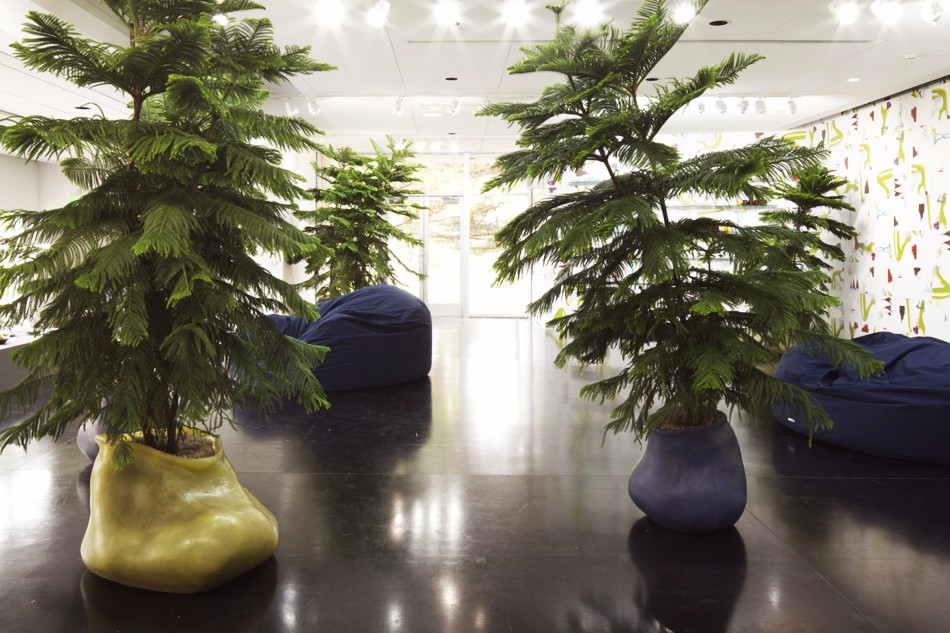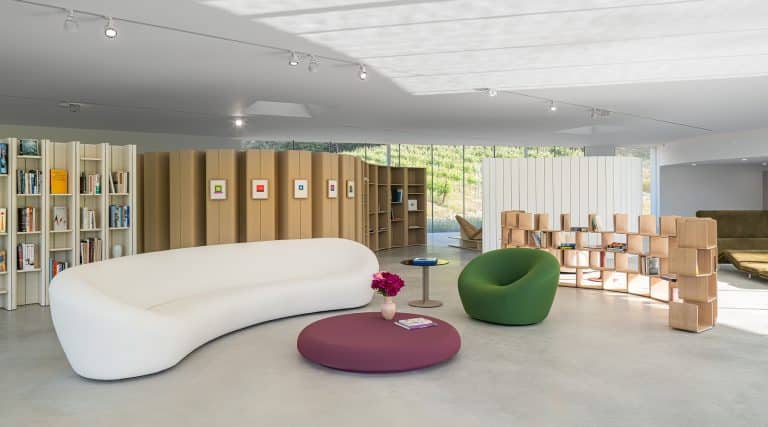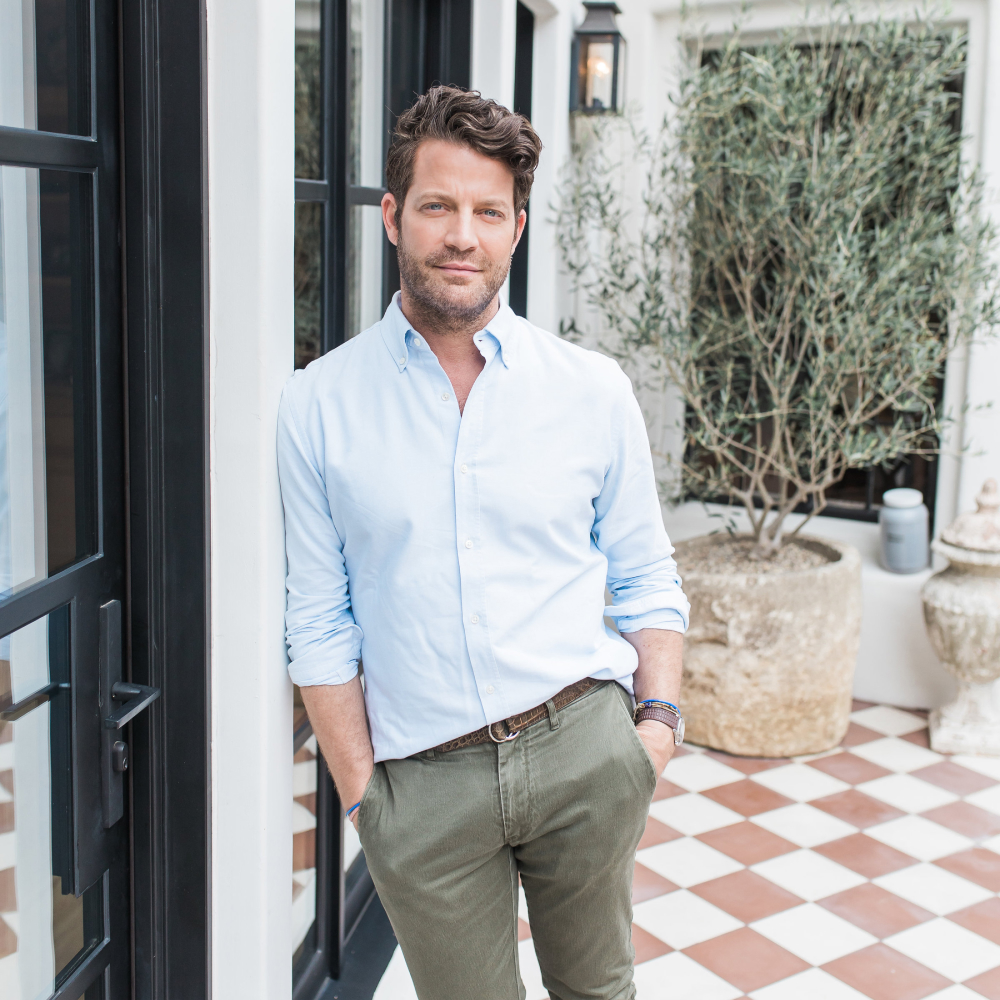
March 16, 2015Paula Hayes, a self-described “terrarium lady,” creates biomorphic sculptures and installations that often employ organic materials, from mosses and ferns to crystals (photo by Béatrice de Géa). Top: Her “Gazing Globes” are on view at Madison Square Park through April 19 (photo by by Yasunori Matsui, courtesy of the artist and Salon 94).
Anyone who walks along the Broadway side of Manhattan’s Madison Square Park from now through April 19 will encounter a magical sight: 18 transparent globes, perched on translucent pedestals, each of which holds a wondrous landscape of metallic rocks, luridly colored seas and mysteriously antennaed creatures. Examine these tiny worlds — as many park visitors are doing, despite the cold — and you’ll realize that they’re built from old transistors, wires, glass vacuum tubes and other relics of an earlier information age, one based on analog communication. In short, they’re made from the sort of thing you’re more likely to find in an old-fashioned radio repair shop than in a public artwork.
Called “Gazing Globes,” this temporary installation is the work of Paula Hayes, an artist otherwise best known for making art from living materials. Since 2003, she’s been especially celebrated for her terrariums — biomorphic blown-glass bubbles planted with miniature mosses, crystals and ferns — which have been snapped up by art-world cognescenti like the collector Aby Rosen and the dealer David Zwirner, shown at venues like Lever House and the Museum of Modern Art and copied and popularized by any number of retailers, including Target.
“I’m kind of the terrarium lady,” says Hayes, 56, on a phone call from the garden of her house in Athens, New York — a “teeny, teeny, teeny town,” as she describes it, in the Hudson River Valley. (She also lives and works in Brooklyn part-time.) In fact, when the Madison Square Park Conservancy, which produced the project, first approached Hayes three years ago, they asked her to make terrariums for the park. But she never pursued that idea seriously “because of the time of year,” she says. “I thought, ‘They can’t be plants. It has to be something that evokes landscape, but that also says something about the landscape we’re living in presently.’ ”

The bubble-shaped terrariums of the artist’s “Gazing Globes” installation, sited throughout the grounds of Madison Square Park and rising three to six feet off the ground, fascinate park visitors. Photo by Yasunori Matsui, courtesy of the artist and Salon 94
Hayes, an ardent environmentalist, soon realized she could build such a terrain from non-biodegradable materials. “These materials are considered so throwaway, but they are incredibly not digestible by the earth,” she says, adding that their durability also makes them perfect as art media. “They’re usually out of sight, out of mind, and I really wanted to make them in sight,” as well as “insightful and perceptive of our time.”

Displayed on translucent pedestals, the polycarbonate spheres contain surprising landscapes of non-biodegradable materials from an earlier age of communication, such as old transistors, wires and glass vacuum tubes. Photo by Yasunori Matsui, courtesy of the artist and Salon 94
Hayes also wanted to make something beautiful — and in that, she has certainly succeeded. Spiked with crystal and acrylic stalagmites, and sparkling with glitter made from pulverized CDs, her futuristic dioramas are oddly beguiling. In the daytime, they glow with pale color, melding with their surroundings so effectively that it’s hard to tell if the snow and icicles covering them are the work of nature or the artist. At night, lit from below, they seem to hover in space, suggesting an eerie cluster of crystal balls, while also reflecting the lights of familiar local landmarks like the Flatiron and Empire State buildings.
“It’s winter,” says Brooke Kamin Rapaport, the Conservancy’s Martin Friedman senior curator, “so some people are calling them snow globes. But they really come from the medieval tradition of the gazing ball, with its mystical powers.” Those ornaments, which originated in 13th-century Venice, were once regarded as fertility symbols that could ward off evil spirits.
“Paula always reminds us of our relationship to the environment,” says Ian Berry, Dayton director of the Tang Teaching Museum at Skidmore College, which gave Hayes a career survey in 2010. “She has created gazing balls that look into the past and the future at the same time.”
A mystical aesthetic also permeates “Morning Glory,” another plant-free installation by the artist at New York’s Salon 94 Bowery gallery through March 22. Here, Hayes presents eight trumpet-shaped molded-acrylic chandeliers that suggest upside-down morning glories, flowers whose petals typically open only between dawn and noon, and whose seeds are valued by some for their hallucinogenic properties. (Just like the flower, Hayes says she too is “very affected by light; I get up extremely early and I wait for sunrise.”) Inspired by the coloration of the aurora borealis, each lamp seems to move gently, suspended from an aerial hoop or trapeze. The show also includes a mesmerizing video, made by Hayes and her composer husband, Teo Camporeale, that incorporates 1957 footage of Barnum & Bailey trapeze artists.
At first glance, these two non-organic projects seem a massive departure for Hayes, who has been incorporating plants into her artwork since the early 1990s, soon after she graduated from Skidmore and moved to New York to study at the Parsons School of Design. Back then, she supported herself as a gardener, while showing sculpture and found-material environments at the artist-run collaborative AC Project Room. (She also ran her gardening office out of the gallery as a conceptual artwork.) One celebrated early piece was Agreement for a potted plant as artwork, 1997, a plant that could only be acquired after a collector co-signed an agreement that obligated him or her to to nurture the purchase, and Hayes to continue this sort of practice.
“These materials are usually out of sight, out of mind, and I really wanted to make them in sight.”
Yet Hayes’s dealer, Salon 94 founder Jeanne Greenberg Rohatyn, maintains that the new work is a logical evolution of the artist’s oeuvre. “She’s using all the language that she’s gleaned from working in nature about recycling and rejuvenation,” says Rohatyn, going on to note that Hayes has been deeply involved with technical innovation since at least 2003, when she conceived of her terrariums, working with the glassblower Jeff Zimmerman to fabricate the early batches. (“They were born in my kitchen,” Rohatyn recalls.)

Hayes’s futuristic dioramas color glow with pale color during the day and reflect the lights of surrounding buildings at night. Photo by Yasunori Matsui, courtesy of the artist and Salon 94
Berry agrees about Hayes’s commitment to the new materials and techniques. “She’s made a lot of objects that are very complicated and technically eye-popping,” he says, citing acrylic bird baths and aluminum bird houses shaped like trees. Hayes also designed wallpaper, furniture, and a complete set of dinnerware for an immersive environment in the Tang retrospective, “which became one of our most popular participatory installations,” Berry notes.
Hayes herself points out that she has always been fascinated by technology and engineering. Growing up in Westborough, Massachusetts, her hero was her grandfather, an inventor who worked for the aerospace industry. “When I was little,” she says, “I would go down into his invention lab and look at all of his machines, and I would be so in awe. He really inspired me.”
Besides, by her reckoning, the globes are a living artwork: Just look at the avid reaction they’ve inspired in visitors to the park, who can usually be seen posing with them and taking pictures.
“If you go to Instagram and you hashtag #gazingglobes, you will see what they’ve done,” Hayes says. “The beautiful photography and creativity of the public is the living aspect of those artworks.”












